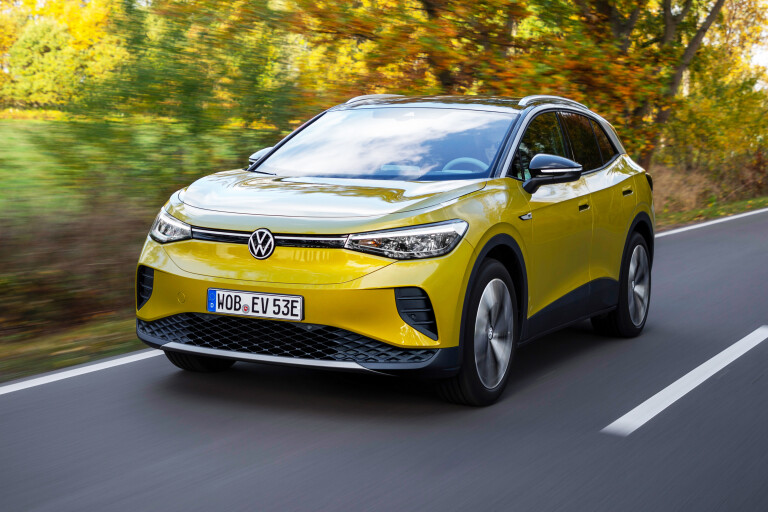
The Beetle. The Golf. Tough acts to follow. But that’s exactly what the Volkswagen ID.4 must do. Like the Beetle and the Golf, the ID.4 has been designed as a family vehicle that will be sold around the world. And just as the enduring Beetle and the evergreen Golf came to define the Volkswagen brand for generations of consumers, Wolfsburg hopes the ID.4 can do the same for a whole new generation. The electric generation.
The Europe-only ID.3 launched Volkswagen Group’s vaunted MEB electric vehicle architecture, but the ID.4, not expected to arrive in Australia before 2024, is the first global Volkswagen to be built on the new hardware. MEB has cost billions to develop and is intended to underpin millions of battery-powered Volkswagen Group cars and SUVs over the coming decade. Yep, Volkswagen’s going all-in on electric vehicles, and the ID.4 is anything but a tentative toe in the water.

The ID.4 1st Edition Pro Performance shown here is a special launch model fitted with what is currently the top-spec 77kWh battery and a 150kW e-motor mounted at the rear and driving the rear wheels. Claimed range is 538km according to the urban-focused European WTLP protocol, or 402km according to the EPA test in the United States, which includes more highway mileage. Entry-level ID.4s will be available with a 52kWh battery and the choice of either a 109kW or 125kW e-motor. The ID.4 range will be topped by the GTX, which gets an 80kW e-motor at the front axle to deliver all-wheel drive and a total system output of 220kW.
It’s not just the ID.4’s powertrain that betrays just how dramatically the automotive mainstream is changing in the 21st century. It’s the way it looks, too. Sedans, hatches, and wagons are fast becoming yesterday’s family cars, so though the ID.4 shares much of its hardware with the Golf-like ID.3, it’s configured as a mid-size SUV, aimed squarely at the heart of the world’s fastest growing and most popular market segment.
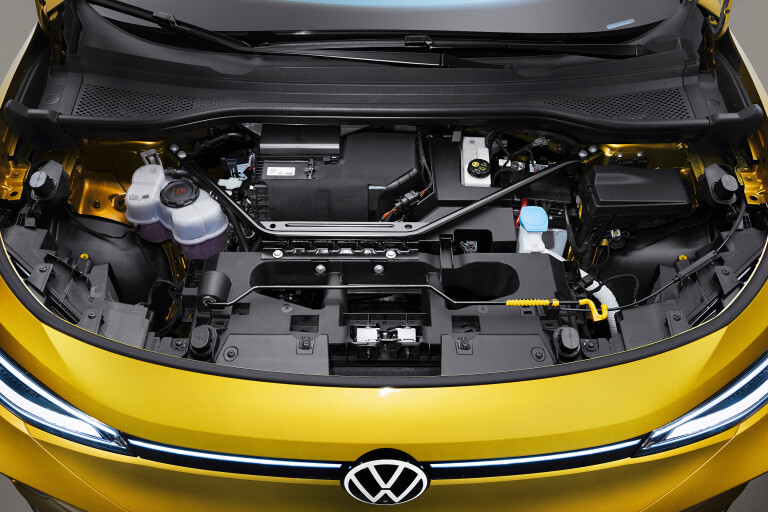
At 4584mm long and 1852mm wide the ID.4 sits between the Toyota RAV4 and Mazda CX-5 but is 45mm lower overall than the Toyota and 35mm lower than the Mazda. The ID.4’s 2771mm wheelbase is 81mm longer than the RAV4’s and 71mm longer than the CX-5’s, and this, combined with the lower roofline and lack of a grille, makes the Volkswagen look deceptively sleeker than other mid-size SUVs.
That longer wheelbase, combined with the inherent packaging advantages of the MEB architecture, should make the ID.4 noticeably more spacious inside than its conventionally powered rivals. The tape measure tells a different story, however: The ID.4’s rear-seat legroom is the same as that of the RAV4 but despite appearances, the Volkswagen has significantly more headroom. And at 543 litres, the ID.4’s rear load space doesn’t quite match the 580 litres offered by the RAV4, though it easily tops the CX-5’s 442 litres.
It’s not just the ID.4’s powertrain that betrays just how dramatically the automotive mainstream is changing. It’s the way it looks, too.
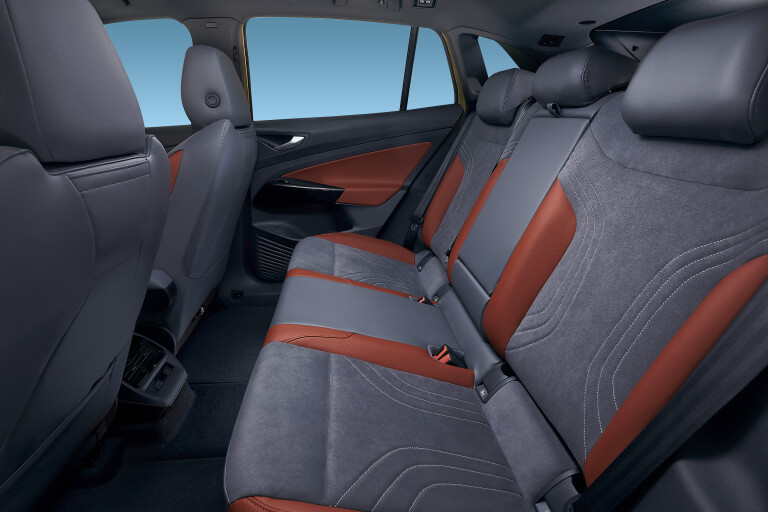
The ID.4 1st Edition is priced at £40,800 in the UK, which is 11 per cent more than the all-wheel-drive Tiguan R-Line with the 2.0-litre TSI engine. Using the similar Australian-spec Tiguan R-Line as a baseline, you’re looking at a car that will cost close to $70,000 here. In addition to all the usual 21st century digital perquisites – central touch screen, sat-nav, adaptive cruise control, Apple CarPlay and Android Auto connectivity, etc. – the 1st Edition spec includes 20-inch alloy wheels and an interior finished in black, brown, grey, and white.
Curiously for a modern Volkswagen Group product, the interior doesn’t feel especially premium. The minimalist approach to the instrumentation and controls is very Tesla-esque, but the white steering wheel, the white steering column shroud with the small, white-framed digital instrument panel mounted on top, the white frame around the central touchscreen, and the white plastic panels around the window lifts on the doors feel cheap and will inevitably get grimy. Fortunately, in regular ID.4s all these pieces are black.

For a vehicle with a long wheelbase and flat floor, the relative lack of storage space in the ID.4’s cabin is also surprising. The free-standing centre console is narrow and shallow, its entire length rising no higher than the base of the front seats. What looks like a proper glovebox is a visual con – open the lid and all you get is a storage compartment half the width of the lid. The door pockets are a reasonable size, but no better than you’ll find in many regular cars.
As mentioned, the rear load space is decent. There’s a hatch through to the cabin for long loads such as skis, and with the rear seats folded, the ID.4’s load-lugging capacity jumps to 1575 litres – still not a match for the RAV4’s 1690 litres, though. Lifting the rear hatch reveals a quality niggle: The metal hooks for the luggage tie-downs at the front of the load space aren’t fully painted like those at the rear, and once you notice it, you can’t un-see it. And you’ll lift the rear hatch a lot, because that’s where the ID.4’s charging cables are stored, in a small compartment under the floor.
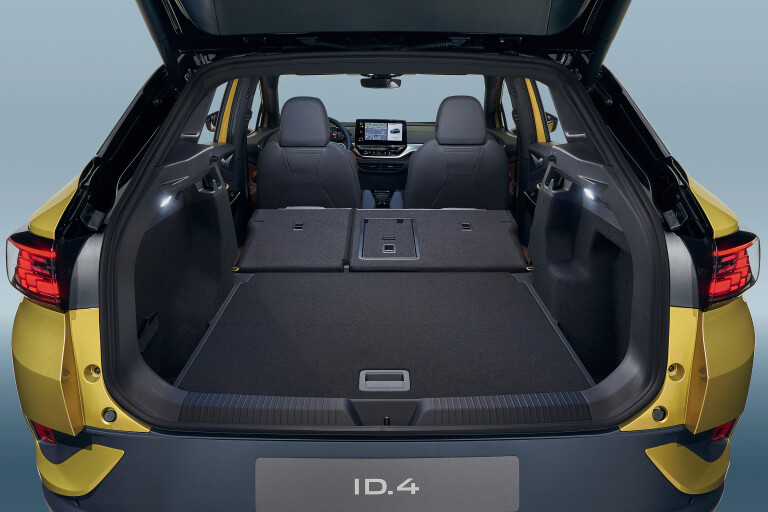
Unlock the door, slide in behind the wheel, put your foot on the brake and, like a Tesla, the ID.4 silently wakes up. Twist the toggle on the right-hand side of the instrument panel into D – or twist it once more to B if you want a high-regen drive mode that allows close to one-pedal driving – and you’re good to go.
There is 310Nm of instant-on torque from the rear-mounted e-motor, so like most electric vehicles, the ID.4 steps off briskly despite its 2124kg overall weight. Volkswagen claims a 0-100km/h acceleration time of 8.5 seconds, making it comfortably quicker than either the 1550kg RAV4 or the 1559kg CX-5. When we tested both last year, these respectively took 9.4 seconds and 10.3 seconds for the sprint. And VW's claim may be a conservative number: Instrumented performance tests of the 1st Edition in the U.S. suggest it could be almost a second quicker. We can confirm, however, that the ID.4's top speed is indeed 160km/h.
There is 310Nm of instant-on torque from the rear-mounted e-motor, so like most electric vehicles, the ID.4 steps off briskly despite its 2124kg overall weight.
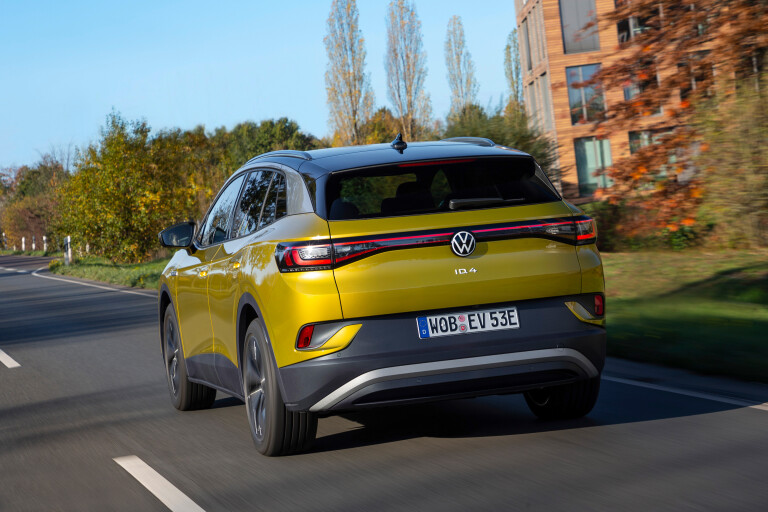
As you might expect, the ID.4 drives differently from almost every other Volkswagen. The smooth, silent surge of acceleration is standard electric vehicle fare. Volkswagen offers four drive modes: Eco, Comfort, Sport, and Individual. Among other things, Eco dials back the reaction to accelerator inputs and limits the top speed to 130km/h. It’s fine for constant freeway running but makes the ID.4 feel too lethargic around town and on country roads, where the Comfort setting delivers the quicker response useful for plugging gaps in the traffic or overtaking.
Offering a Sport mode in a conventionally powered family SUV is usually a triumph of marketing hype over common sense, and it’s even more emphatically so in this electric Volkswagen. Selecting Sport mode in the ID.4 simply deadens the already slightly gluey steering even more, and introduces lift-off regen that’s about half as strong as that when you switch past D and into B. Apart from the fact that using kinetic energy is more efficient than recycling it back into the battery, the ID.4 flows down the road better in Comfort mode, which allows the car to coast when you lift off, and allows you to decide precisely when to initiate regen through the simple expedient of squeezing the brake pedal.
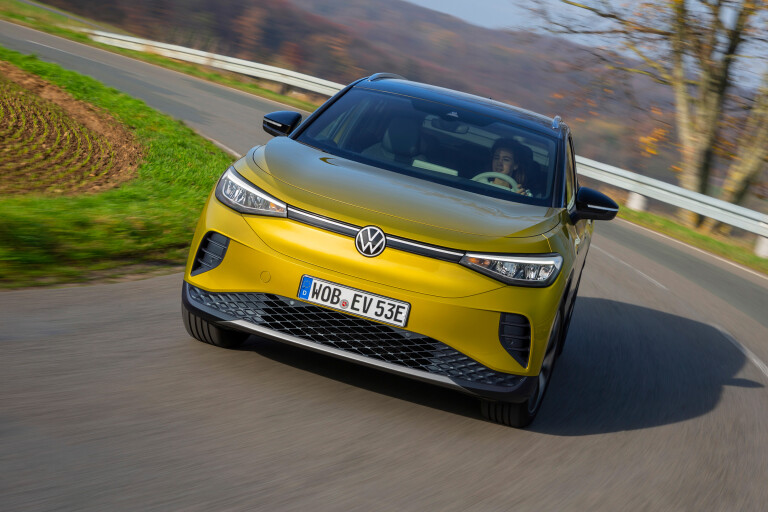
The brake pedal feel is good, however, and the transition from regenerative braking to mechanical braking imperceptible. The reason the ID.4 has drum rear brakes, says Volkswagen, is the power of the regenerative braking effect means it doesn’t need four-wheel discs.
Rear-wheel drive means the ID.4 has a tighter turning circle than front-drive architected mid-size SUVs such as the RAV4, despite its longer wheelbase, but at 3.0 turns lock to lock the steering is lower geared than most. Rear-drive, along with a lower centre of gravity courtesy of the battery mounted low in the chassis, also makes the ID.4 feel sportier in the twisty bits than most mid-sized SUVs.
Rear drive, along with a lower centre of gravity courtesy of the battery, also makes the ID.4 feel sportier in the twisty bits than most mid-sized SUVs.
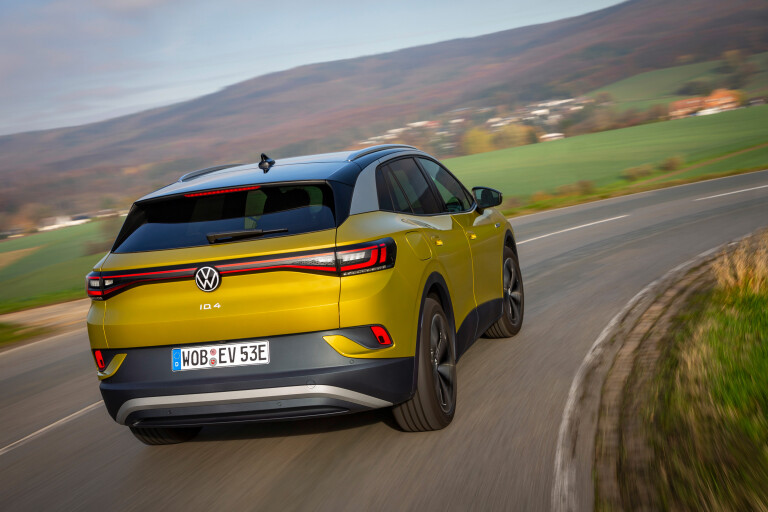
But here Volkswagen was overplayed its hand, at least in the 1st Edition: The firm spring and damper rates designed to manage the ID.4’s considerable mass on smooth, winding German roads have endowed the car with an arthritic low-speed ride that’s totally at odds with its mission as a quiet and comfortable family wagon. The stiff sidewalls of the Bridgestone Turanza Eco tyres – 235/50 R20 up front and 255/40 R2 at the rear – exacerbate the impacts felt through potholes and over sharp bumps. The 18- and 19-inch wheels of the regular ID.4 lineup, shod with higher profile 60- and 55-series rubber, would seem a more sensible choice.
The Beetle and the Golf were game-changers. The Volkswagen ID.4 is not. Well, not in the same sense. Though generally competent, the ID.4 doesn’t rewrite the rulebook in terms of electric vehicle performance or functionality or value. But the industrial thinking behind it, driven by the desire to build electric vehicles by the million, makes it every bit as significant a Volkswagen as those two icons.
2022 Volkswagen ID.4 1st Edition specifications
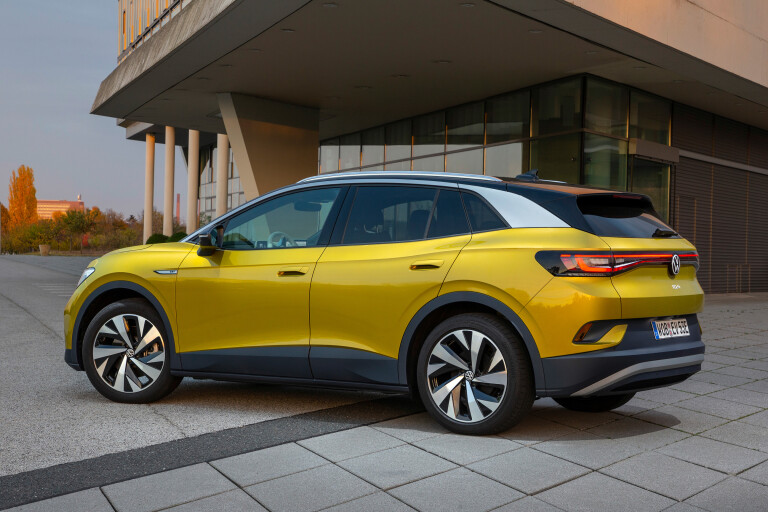
| Engine | Electric motor |
| Max Power | 150kW |
| Max Torque | 310Nm |
| Transmission | single-speed |
| 0-100km/h | 8.5 sec (claimed) |
| Range | 402km – 538km |
| Price | $70,000 (est) |
| On sale | 2024? |



COMMENTS